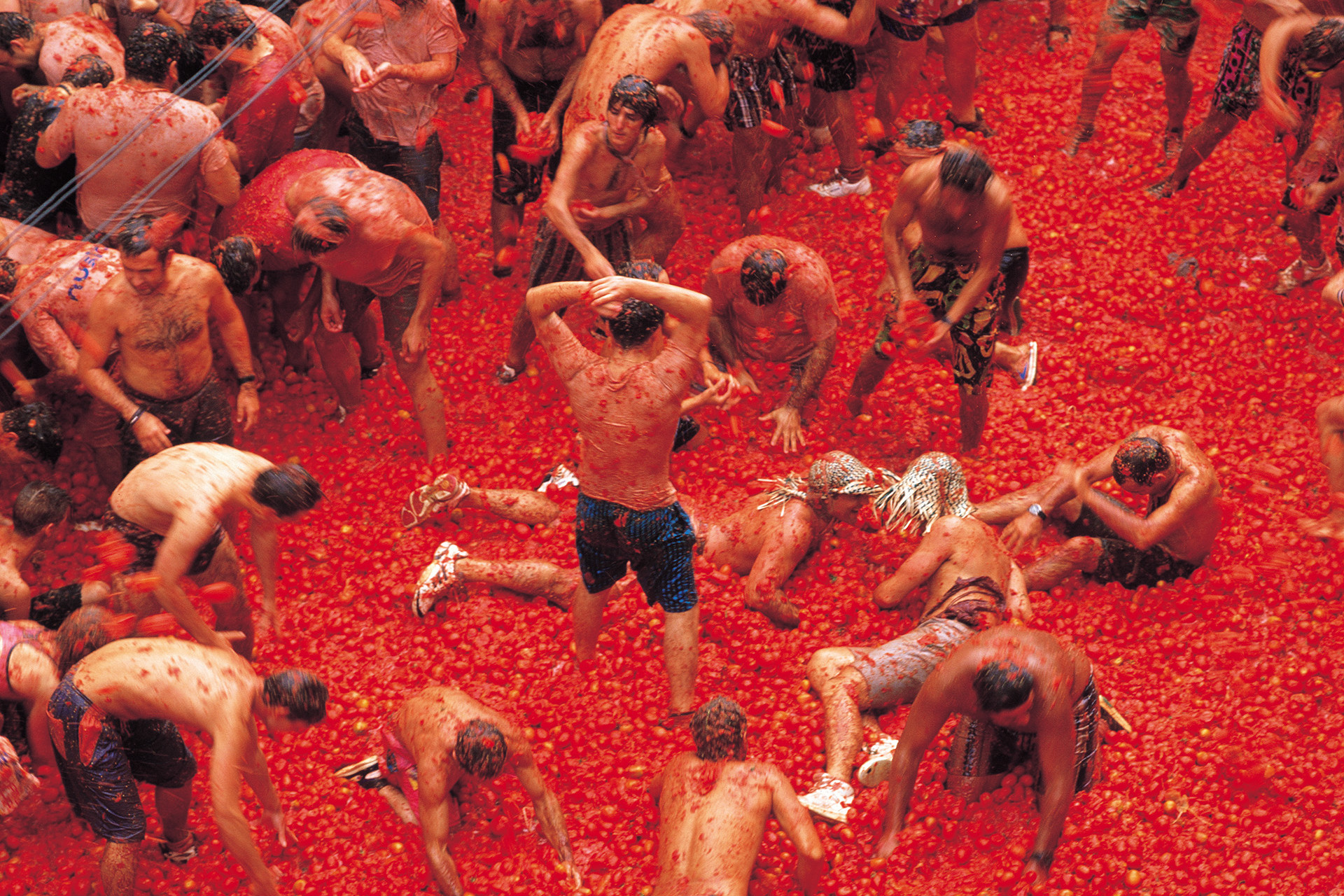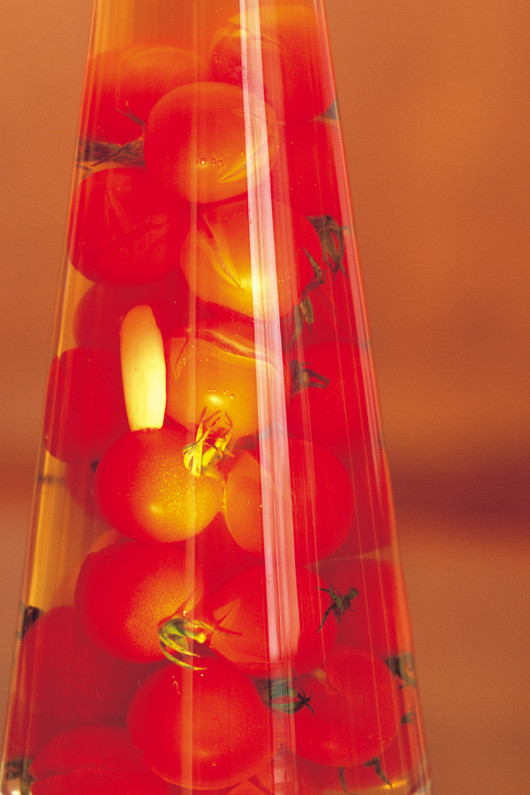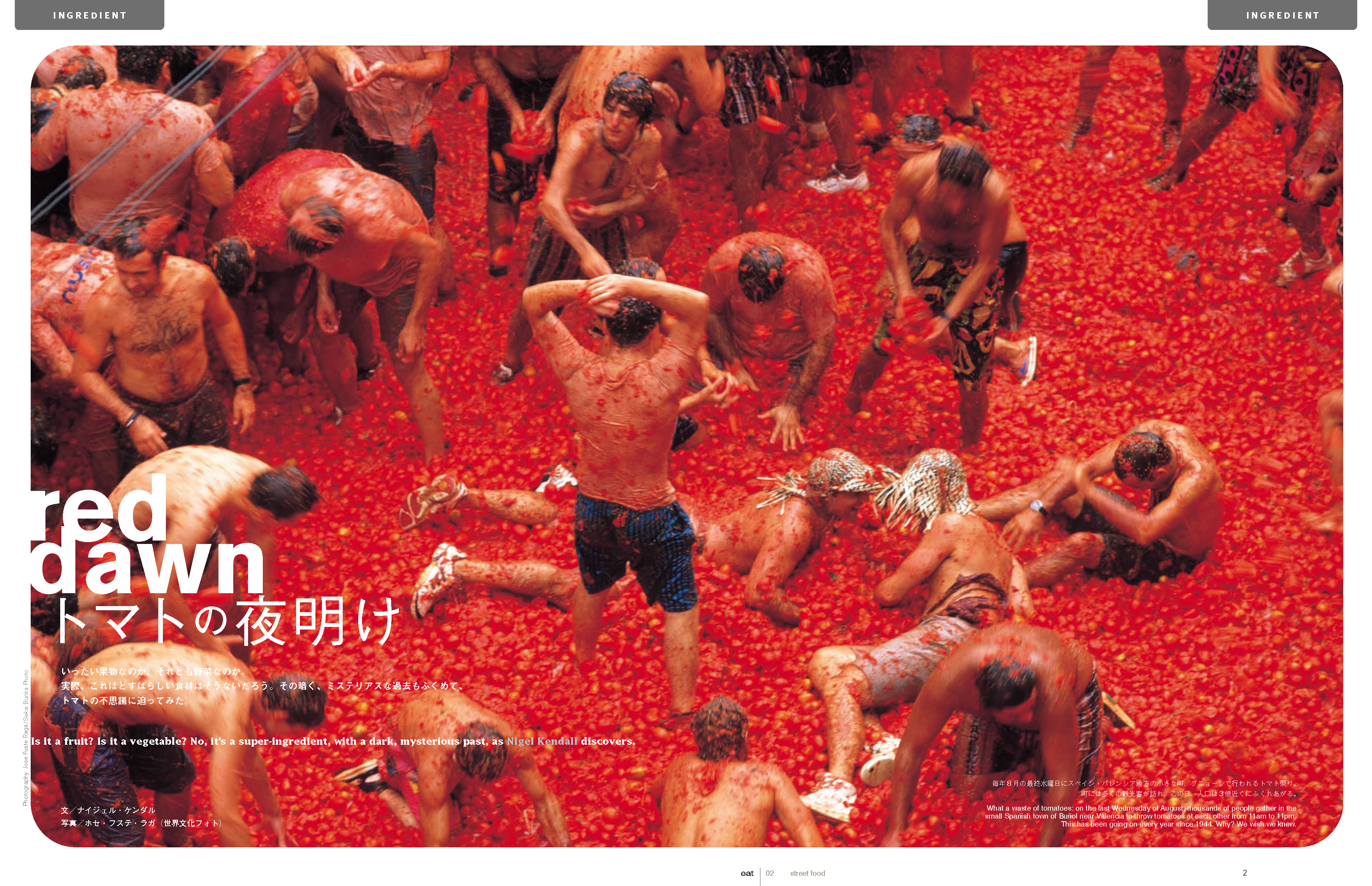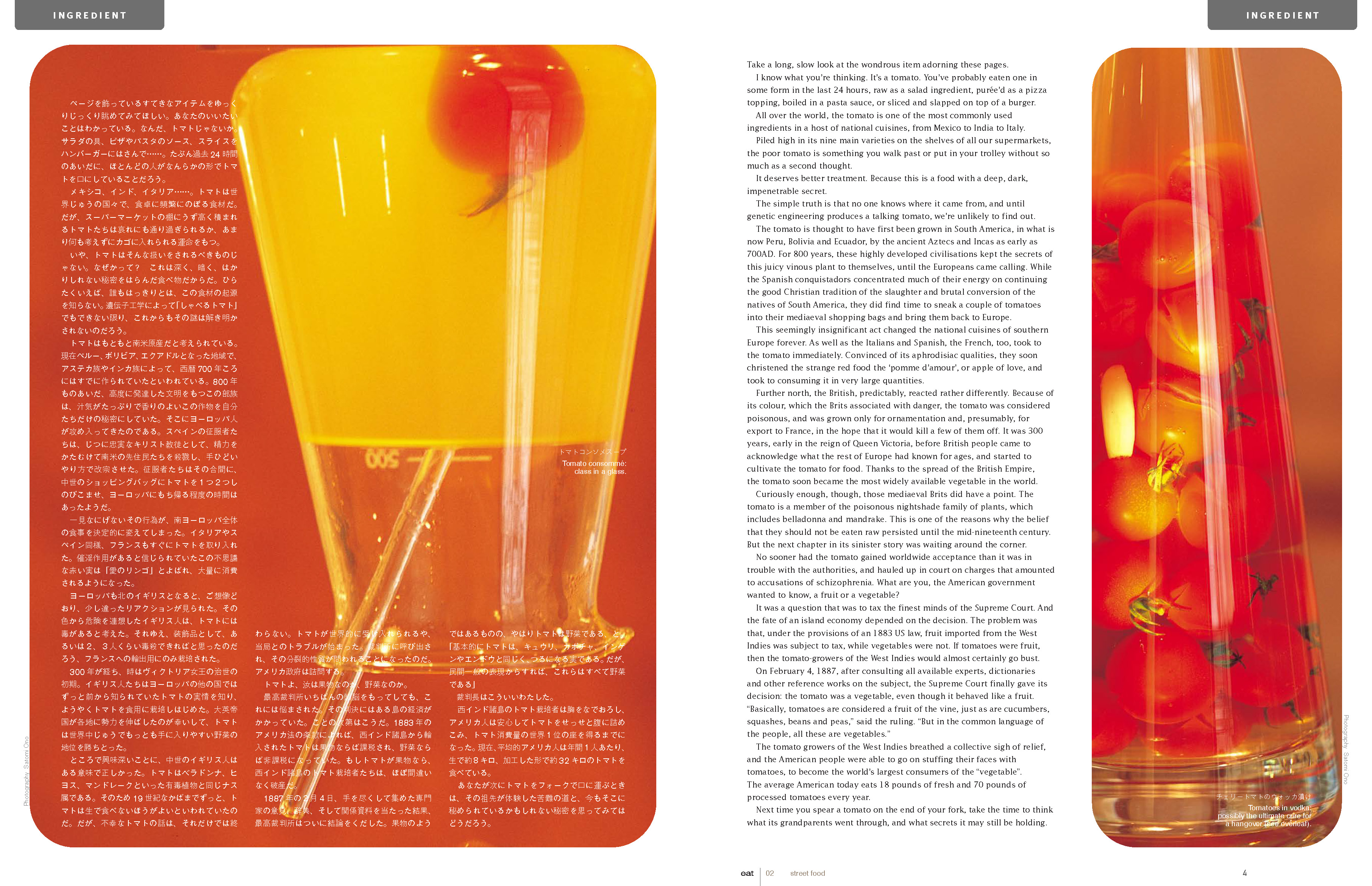Red Dawn
Eat Issue 2: Street Food

This article was originally published in October 2000.
What a waste of tomatoes: on the last Wednesday of August, thousands of people gather in the small Spanish town of Buñol near Valencia to throw tomatoes at each other from 11am to 11pm. This has been going on every year since 1944. Why? We wish we knew.
Is it a fruit? Is it a vegetable? No, it’s a super-ingredient, with a dark, mysterious past, as Nigel Kendall discovers.
Take a long, slow look at the wondrous item adorning these pages.
I know what you’re thinking. It’s a tomato. You’ve probably eaten one in some form in the last 24 hours, raw as a salad ingredient, purée’d as a pizza topping, boiled in a pasta sauce, or sliced and slapped on top of a burger.
All over the world, the tomato is one of the most commonly used ingredients in a host of national cuisines, from Mexico to India to Italy. Piled high in its nine main varieties on the shelves of all our supermarkets, the poor tomato is something you walk past or put in your trolley without so much as a second thought.
It deserves better treatment. Because this is a food with a deep, dark, impenetrable secret. The simple truth is that no one knows where it came from, and until genetic engineering produces a talking tomato, we’re unlikely to find out.

Tomato consommé: class in a glass.
The tomato is thought to have first been grown in South America, in what is now Peru, Bolivia and Ecuador, by the ancient Aztecs and Incas as early as 700AD. For 800 years, these highly developed civilisations kept the secrets of this juicy vinous plant to themselves, until the Europeans came calling. While the Spanish conquistadors concentrated much of their energy on continuing the good Christian tradition of the slaughter and brutal conversion of the natives of South America, they did find time to sneak a couple of tomatoes into their mediaeval shopping bags and bring them back to Europe.
This seemingly insignificant act changed the national cuisines of southern Europe forever. As well as the Italians and Spanish, the French, too, took to the tomato immediately. Convinced of its aphrodisiac qualities, they soon christened the strange red food the ‘pomme d’amour’, or apple of love, and took to consuming it in very large quantities.
Further north, the British, predictably, reacted rather differently. Because of its colour, which the Brits associated with danger, the tomato was considered poisonous, and was grown only for ornamentation and, presumably, for export to France, in the hope that it would kill a few of them off. It was 300 years, early in the reign of Queen Victoria, before British people came to acknowledge what the rest of Europe had known for ages, and started to cultivate the tomato for food. Thanks to the spread of the British Empire, the tomato soon became the most widely available vegetable in the world.
Curiously enough, though, those mediaeval Brits did have a point. The tomato is a member of the poisonous nightshade family of plants, which includes belladonna and mandrake. This is one of the reasons why the belief that they should not be eaten raw persisted until the mid-nineteenth century. But the next chapter in its sinister story was waiting around the corner.

Tomatoes in vodka: possibly the ultimate cure for a hangover (see overleaf).
No sooner had the tomato gained worldwide acceptance than it was in trouble with the authorities, and hauled up in court on charges that amounted to accusations of schizophrenia. What are you, the American government wanted to know, a fruit or a vegetable?
It was a question that was to tax the finest minds of the Supreme Court. And the fate of an island economy depended on the decision. The problem was that, under the provisions of an 1883 US law, fruit imported from the West Indies was subject to tax, while vegetables were not. If tomatoes were fruit, then the tomato-growers of the West Indies would almost certainly go bust.
On February 4, 1887, after consulting all available experts, dictionaries and other reference works on the subject, the Supreme Court finally gave its decision: the tomato was a vegetable, even though it behaved like a fruit. “Basically, tomatoes are considered a fruit of the vine, just as are cucumbers, squashes, beans and peas,” said the ruling. “But in the common language of the people, all these are vegetables.”
The tomato growers of the West Indies breathed a collective sigh of relief, and the American people were able to go on stuffing their faces with tomatoes, to become the world’s largest consumers of the “vegetable”. The average American today eats 18 pounds of fresh and 70 pounds of processed tomatoes every year.
Next time you spear a tomato on the end of your fork, take the time to think what its grandparents went through, and what secrets it may still be holding.

Tomatoes: Ten things you never knew
- The English word "tomato" comes from the original Aztec "tomatl".
- The first tomatoes imported into Europe were golden in colour, which led to them being nicknamed ‘golden apples’. Even today, the Italian for tomato is "pomodoro".
- Tomato pulp is good for the skin. For a homemade beauty treatment, mix with yoghurt, apply to the face for 15 minutes and wash off.
- Most supermarket tomatoes are picked when green and then ripened in special rooms. The most flavourful tomatoes are those that are ripened on the vine. Tomatoes should be firm, richly coloured, and give off a rich aroma.
- Tomatoes are subtropical fruit and should be stored at room temperature. Keeping tomatoes in the fridge will have a detrimental effect on their flavour.
- Tomato juice is claimed to be one of nature’s finest hangover cures. Personal experience suggests that this works better if vodka and Worcestershire sauce are added to the juice. Just for the flavour.
- Tomatoes are one of the healthiest things you can eat. They contain high levels of lycopene, known to reduce the risk of prostate cancer in men who eat ten servings a week. They also contain bags of vitamin C and other antioxidants that offer protection from heart disease, cancer and cataracts.
- In the United States, only potatoes and lettuce are eaten more often than tomatoes.
- There are nine main varieties of tomato: beefsteak, globe, plum, green, cherry, pear, currant, purple and striped.
- Unripe tomatoes can be ripened by placing them in a pierced paper bag at room temperature together with a ripe apple.
Text: Nigel Kendall / Photo: Jose Fuste Raga /Sekai Bunka Photo


